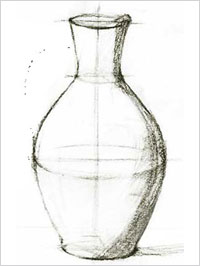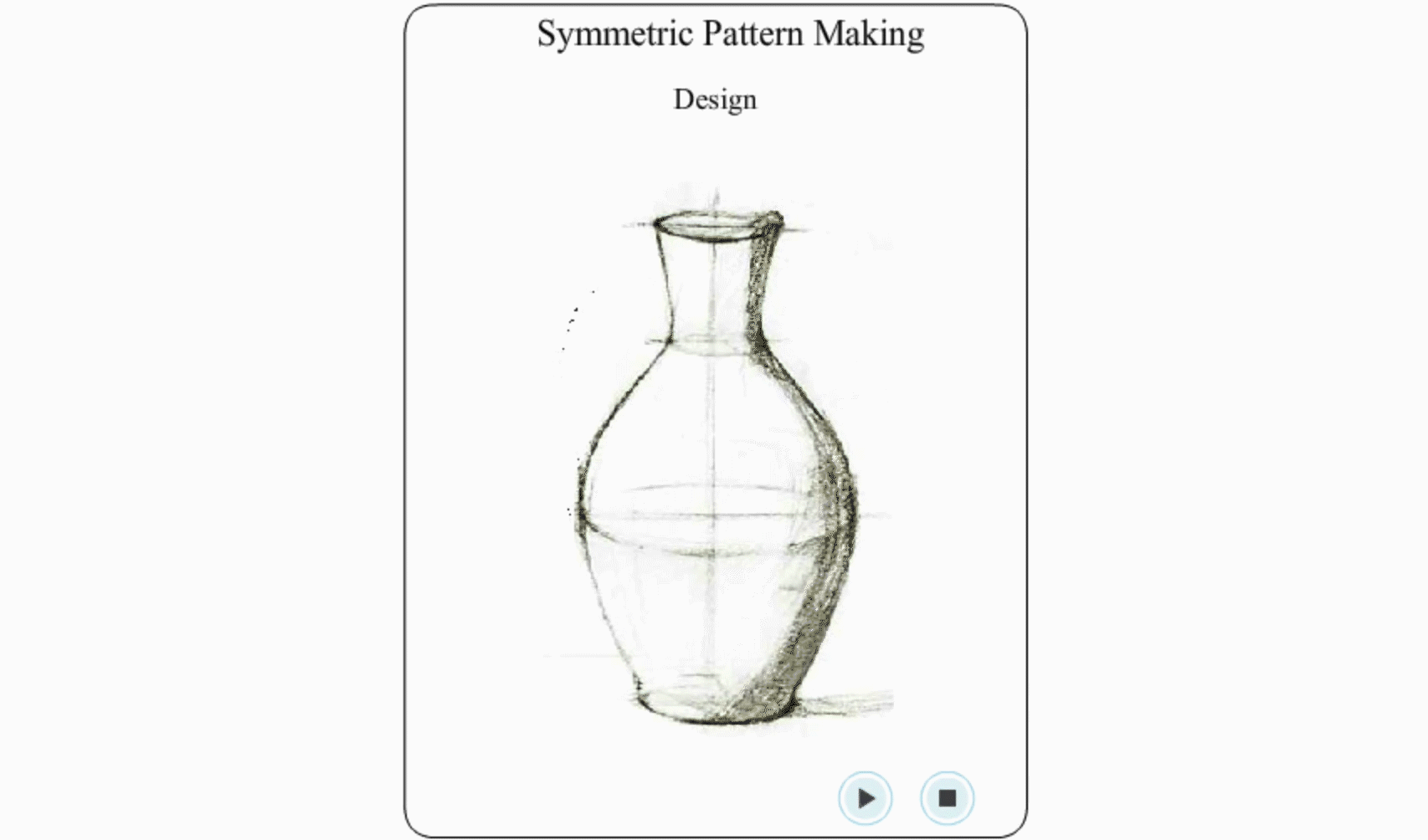The designer should decide the final form of the product. Then, the mould is prepared with the help of a pattern with a material best suited. Plaster is a good material for pattern making in ceramic industry. Making of symmetric and direct and twist extrusion patterns are explained further.
Symmetric Pattern Making : Roto-forming
Half outline of the product which is 50% larger than the real size (as the product shrinks twice, first while drying and then while firing the finished product) is drawn on a metal sheet. Then the metal sheet is cut along the outline and is fixed firmly on a frame to form the template.
Viscous wet plaster is slowly poured over an axel wrapped with wire mesh as reinforcement. The plaster sets around the rotating axel as the wire reinforcement helps in retaining the plaster around the axel. The fixed metal template preform helps the plaster to take the form as desired. The excess plaster gets shaved off from the surface to achieve the desired form. The inserted axel around which the desired plaster form is generated is then retracted.


Direct and Twist Extrusion Pattern:
In this, we first cut the outline of the cross section of the product from a metal sheet to create a template. Please note that the size is 50% larger than the real size considering the shrinkage. Two diagonally opposite holes are punched on the sheet and passed through a fixed railing. This sheet metal template is guided up and down to extrude the desired form as viscous plaster is slowly poured and the template moved up and down taking off excess plaster from the pattern. This is done till the time the final extruded form is generated as a fine surface.



